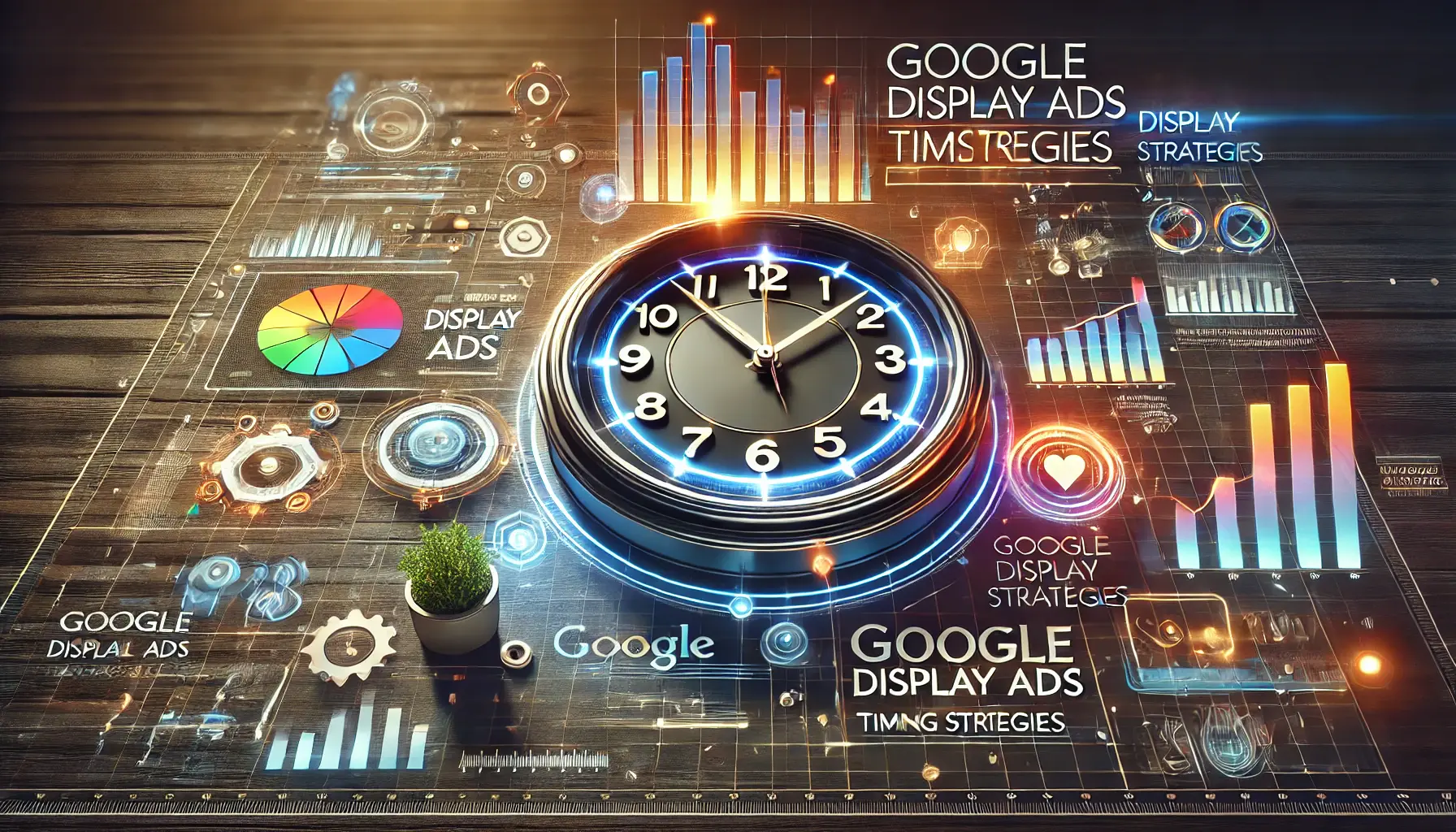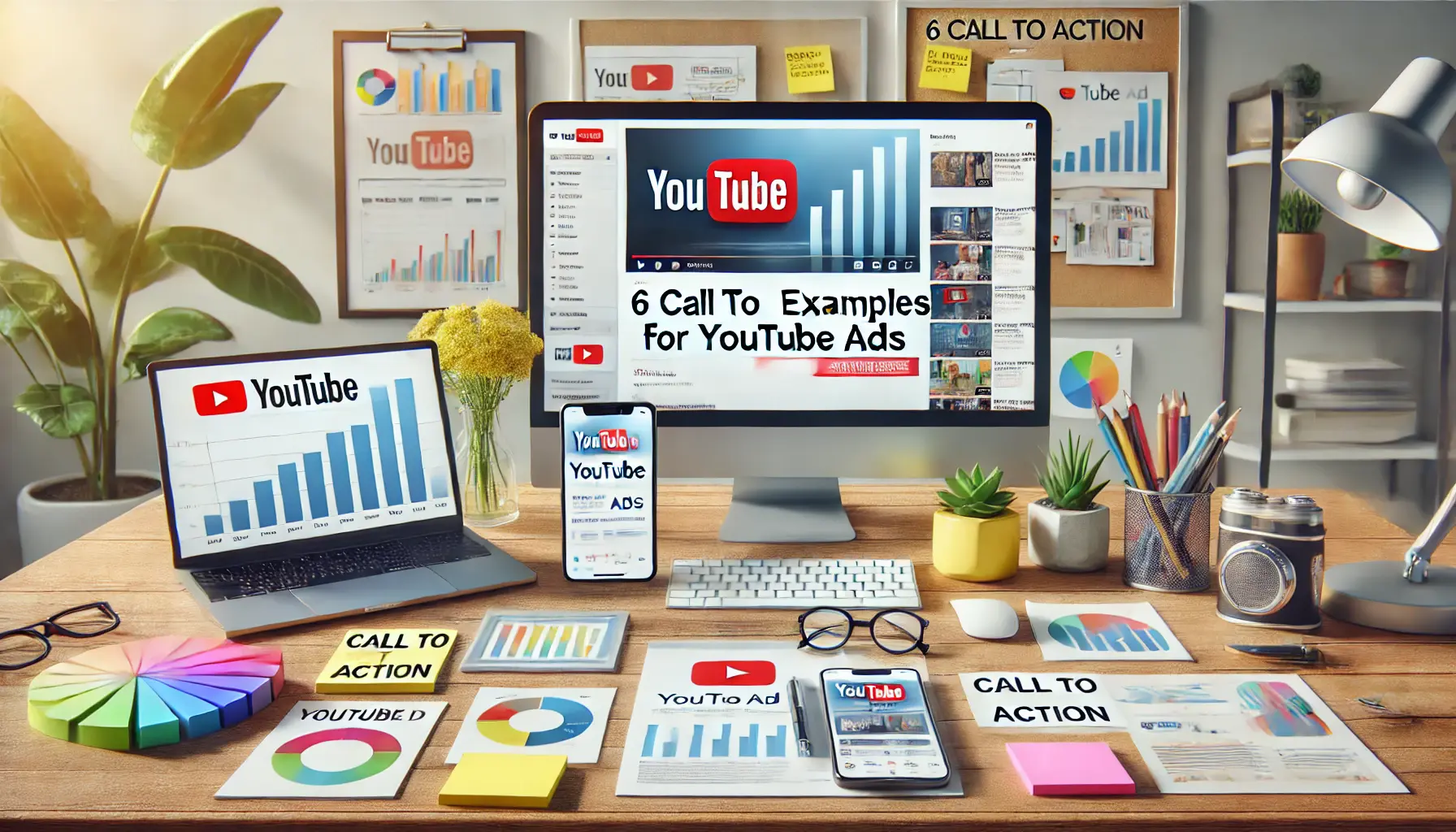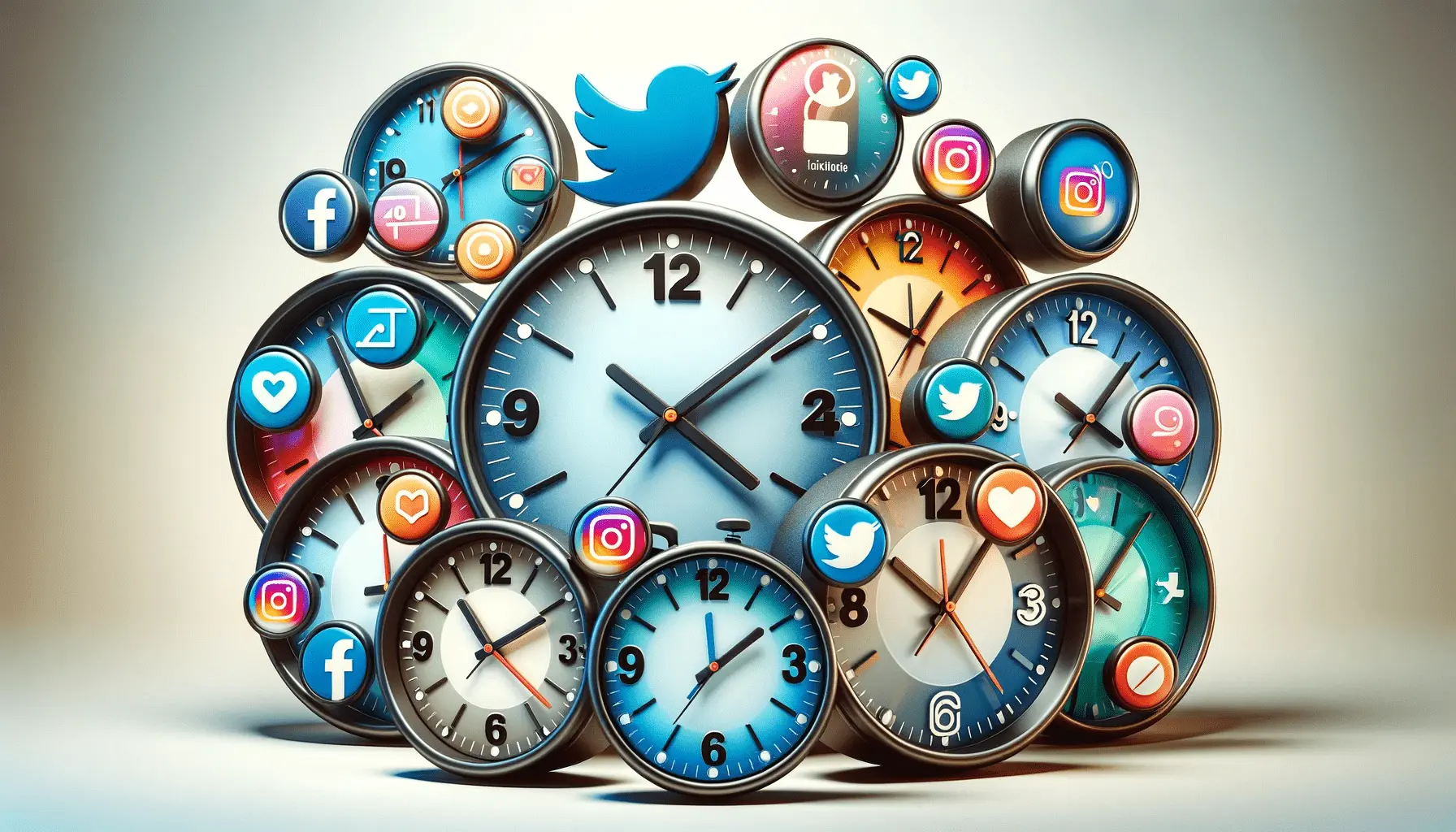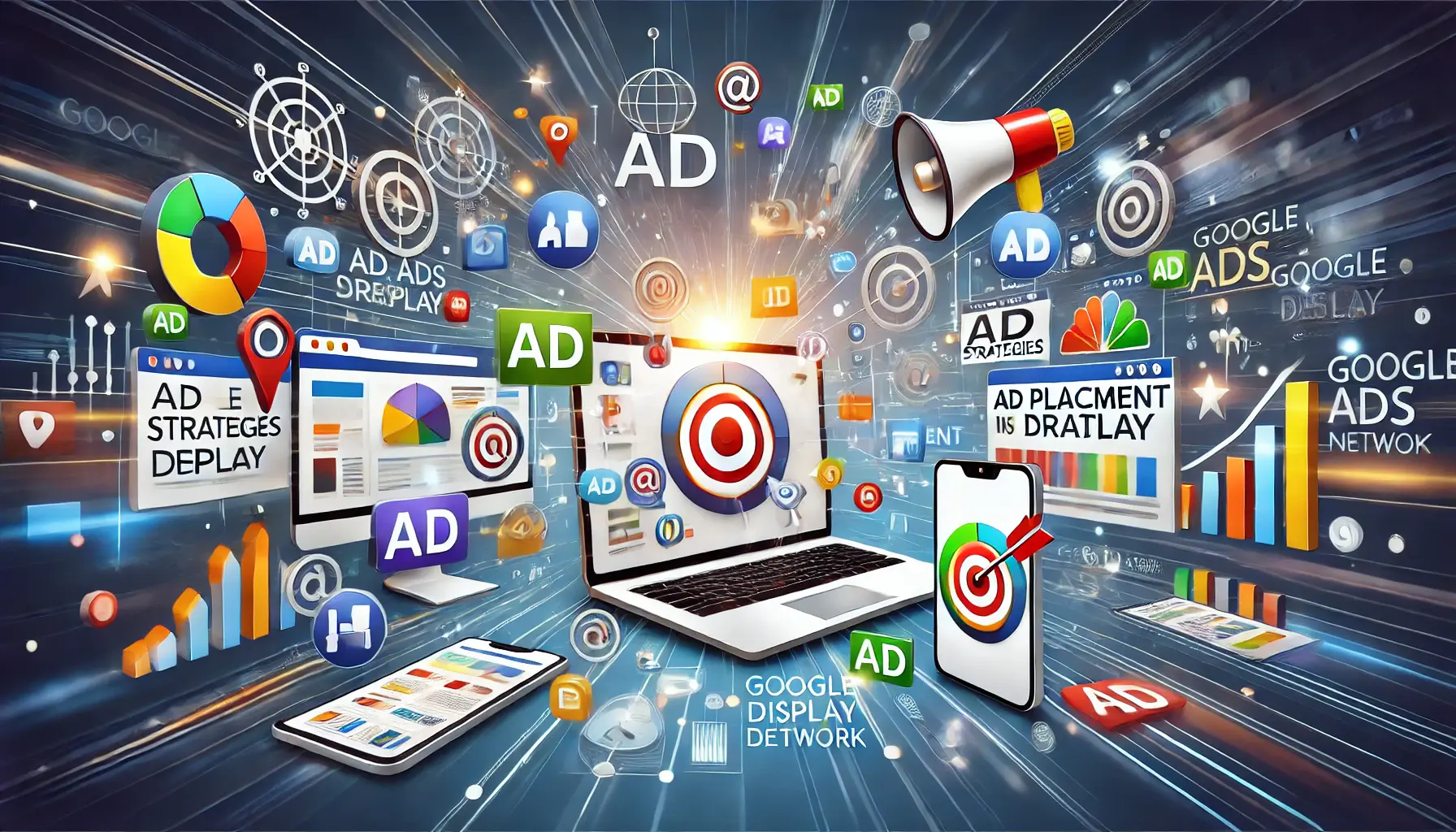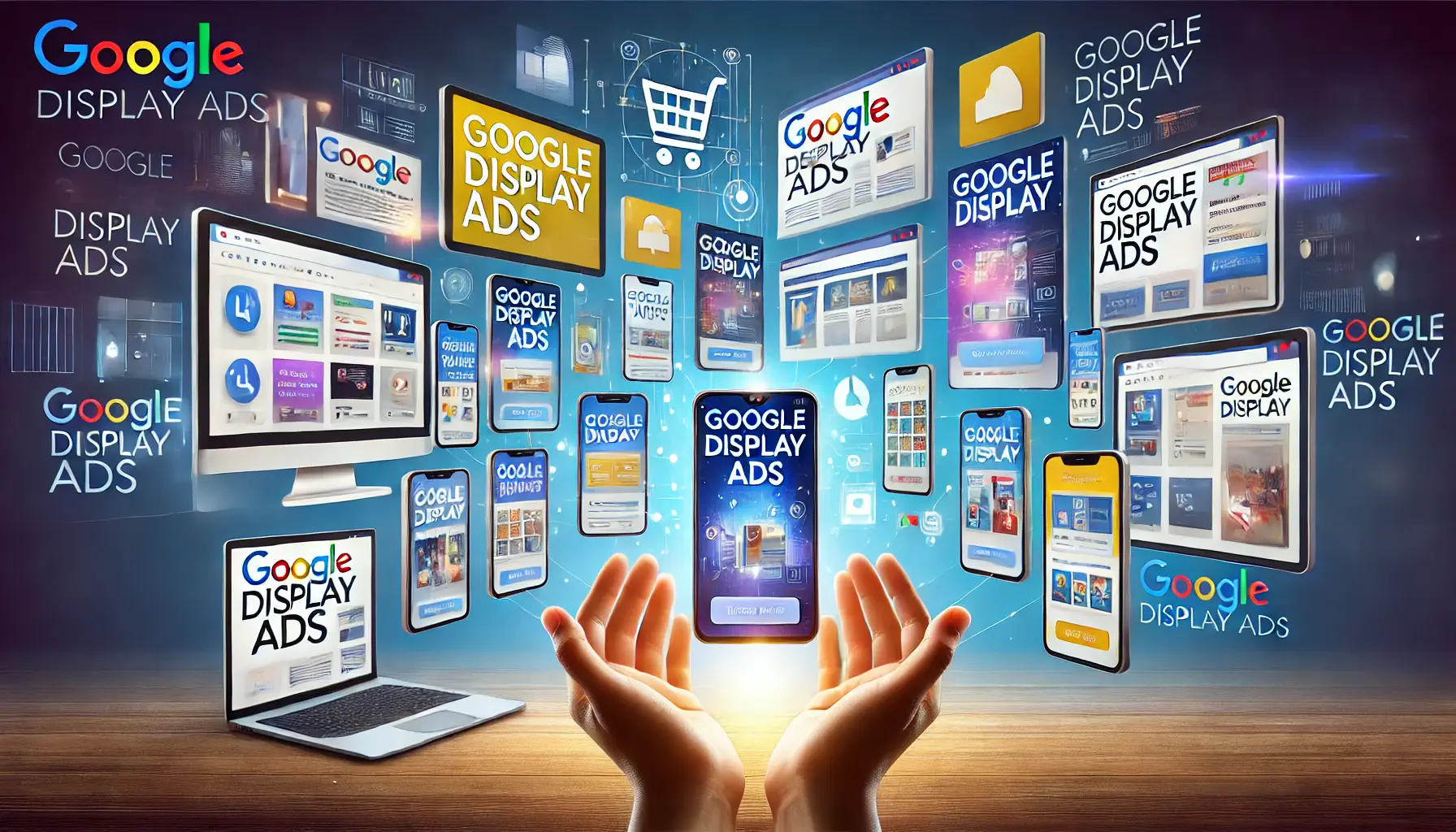Timing can make or break your Google Display Ads campaign.
While creating compelling visuals and persuasive copy is important, knowing when to serve those ads is equally important.
By focusing on the right timing strategies, you can connect with your audience during their most active moments, boosting engagement and maximizing return on investment.
In this article, we will look at five tested timing strategies to help you drive better results from Google Display Ads.
Let’s dive in and see why timing matters and how it can transform your campaign performance.
- Why Timing Matters in Google Display Ads
- Analyzing Audience Behavior for Optimal Timing
- Utilizing Dayparting in Google Ads
- Seasonal Timing Strategies to Boost Ad Performance
- Using AI and Automation for Better Timing
- Mastering Timing Strategies for Google Display Ads
- Top Timing Strategies in FAQs for Google Display Ads
Why Timing Matters in Google Display Ads
Timing plays a pivotal role in determining the success of your Google Display Ads.
Ads that appear at the right time are more likely to capture attention, drive clicks, and lead to conversions.
But why is timing so important?
Let’s break it down.
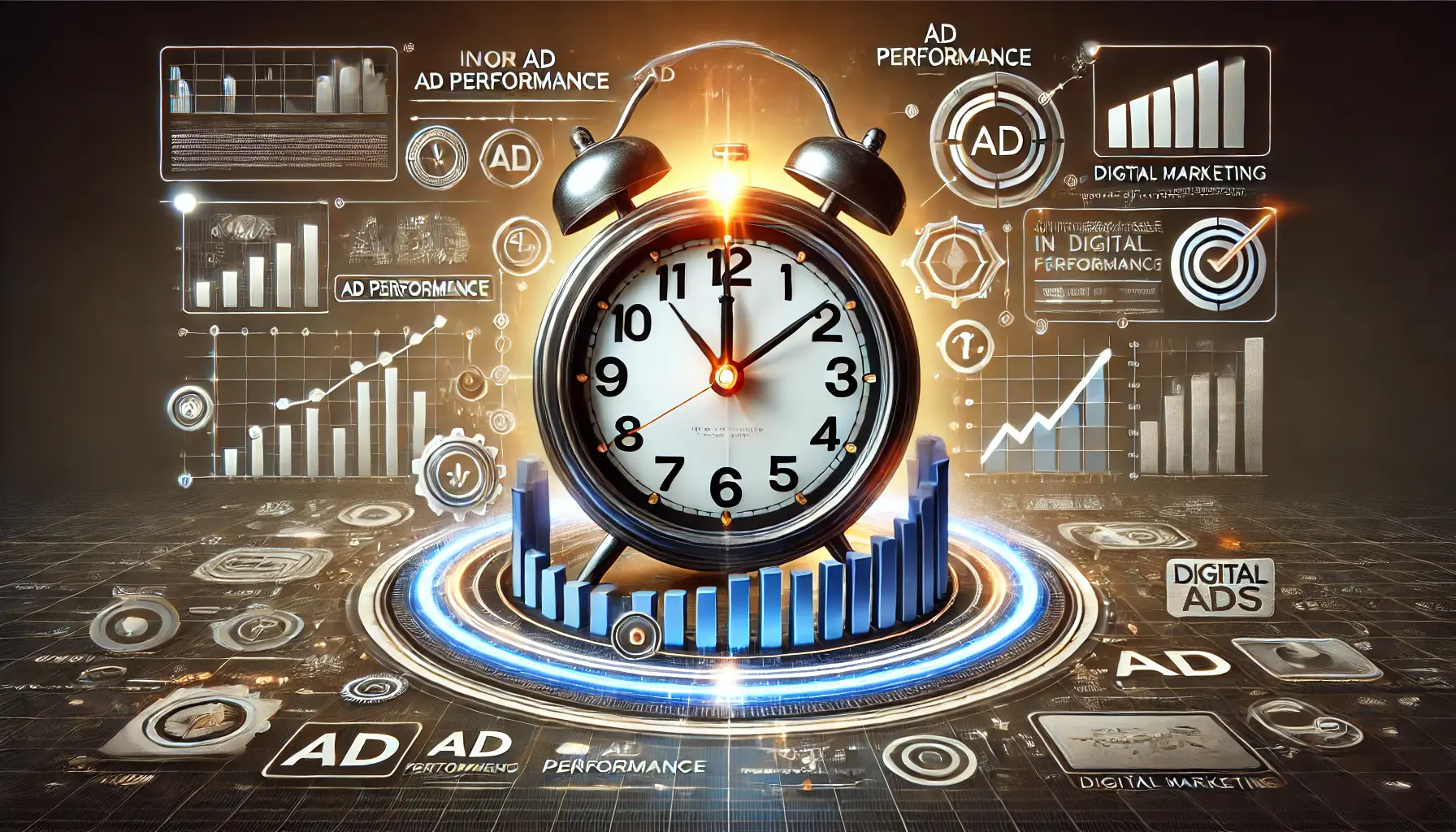
Timing optimizes ad performance by aligning delivery with audience behavior.
The Role of Timing in Ad Performance
Your audience is not always online, and their activity varies throughout the day.
Serving ads during peak hours ensures greater visibility and increases the chances of engagement.
Understanding these patterns allows you to strategically place your ads when your audience is most likely to notice them.

Analyzing online behavior helps tailor strategies to engage your audience effectively.
Understanding Your Audience’s Online Behavior
Every audience has unique habits.
For example, professionals might browse during lunch breaks, while shoppers could be more active during weekends.
Observing these trends helps in tailoring your campaign to meet your audience where they are.

Strategic timing enhances click-through rates by aligning ad delivery with audience activity.
How Timing Impacts Click-Through Rates (CTR)
Click-through rates are heavily influenced by timing.
Ads shown during periods of high activity often yield higher CTRs, leading to better ad quality scores and lower costs per click.
Aligning your ad schedule with audience behavior is a win-win.

Timing is crucial for maximizing ROI by aligning investments with optimal audience engagement.
The Connection Between Timing and ROI
For ads to work, they need to be shown to the right person at the right time; this increases the chances of conversion, thus increasing return on investment.
Timing strategies will ensure your advertising dollar is spent well and will return results that matter.
Timing will surely make your Google Display Ads stand out and drive meaningful results.
Next, let’s get to the how-to of building a successful campaign in the following section.
Timing ensures your ads are shown at the right moment to maximize visibility and engagement, ultimately driving better campaign performance.

Understanding audience behavior ensures precise ad timing and maximizes campaign effectiveness.
Analyzing Audience Behavior for Optimal Timing
Understanding your audience’s behavior is a cornerstone of successful Google Display Ads campaigns.
Knowing when your audience is most active allows you to strategically position your ads, ensuring they reach the right people at the right time.
Let’s explore how to analyze audience behavior effectively and leverage these insights for better ad timing.

Google Analytics provides valuable insights into user habits for strategic ad planning.
Using Google Analytics to Study User Habits
Google Analytics allows you to dive into your audience’s habits.
By reviewing reports such as Audience Demographics and Geographic Locations, along with their active hours, you can identify patterns in user behavior.
Metrics like session duration and bounce rates can highlight the peak times when your content garners the most engagement.
- Demographics Report: Provides data on age, gender, and location, helping uncover patterns in user behavior.
- Behavior Flow: Tracks how users navigate your site and identifies the times when they are most active.
- Real-Time Reports: Monitors live activity to reveal immediate trends in user engagement.

Understanding peak engagement hours optimizes ad delivery for maximum impact.
Identifying Peak Engagement Hours
Your audience’s peak hours can vary based on factors like industry, region, and platform usage.
For instance, e-commerce businesses often see spikes during lunchtime and weekends, while B2B services might experience higher engagement during weekdays.
Regularly reviewing your ad performance data helps determine the optimal hours for running your campaigns.

Segmenting audiences by time zones ensures targeted and effective ad delivery.
Segmenting Audiences Based on Time Zones
If your audience spans multiple time zones, scheduling ads to align with local peak hours is essential.
Segment your campaigns by region and adjust your ad schedules accordingly to ensure maximum relevance.
Google Ads provides advanced settings to simplify ad delivery customization across different time zones.

Historical performance data provides valuable insights to refine future campaigns.
Leveraging Historical Performance Data
Past campaign performance offers valuable clues to enhance timing strategies.
Examining trends in impressions, clicks, and conversions from previous campaigns allows you to refine your ad schedule.
Use this data to test and optimize new timing strategies for continuous improvement.
By understanding audience behavior, you can develop timing strategies that resonate with them, amplify engagement, and unlock the full potential of your campaign.
Let these insights guide us into actionable timing tactics in the next section.
Studying audience behavior helps tailor ad schedules, ensuring your campaigns reach the right people at their most active times.
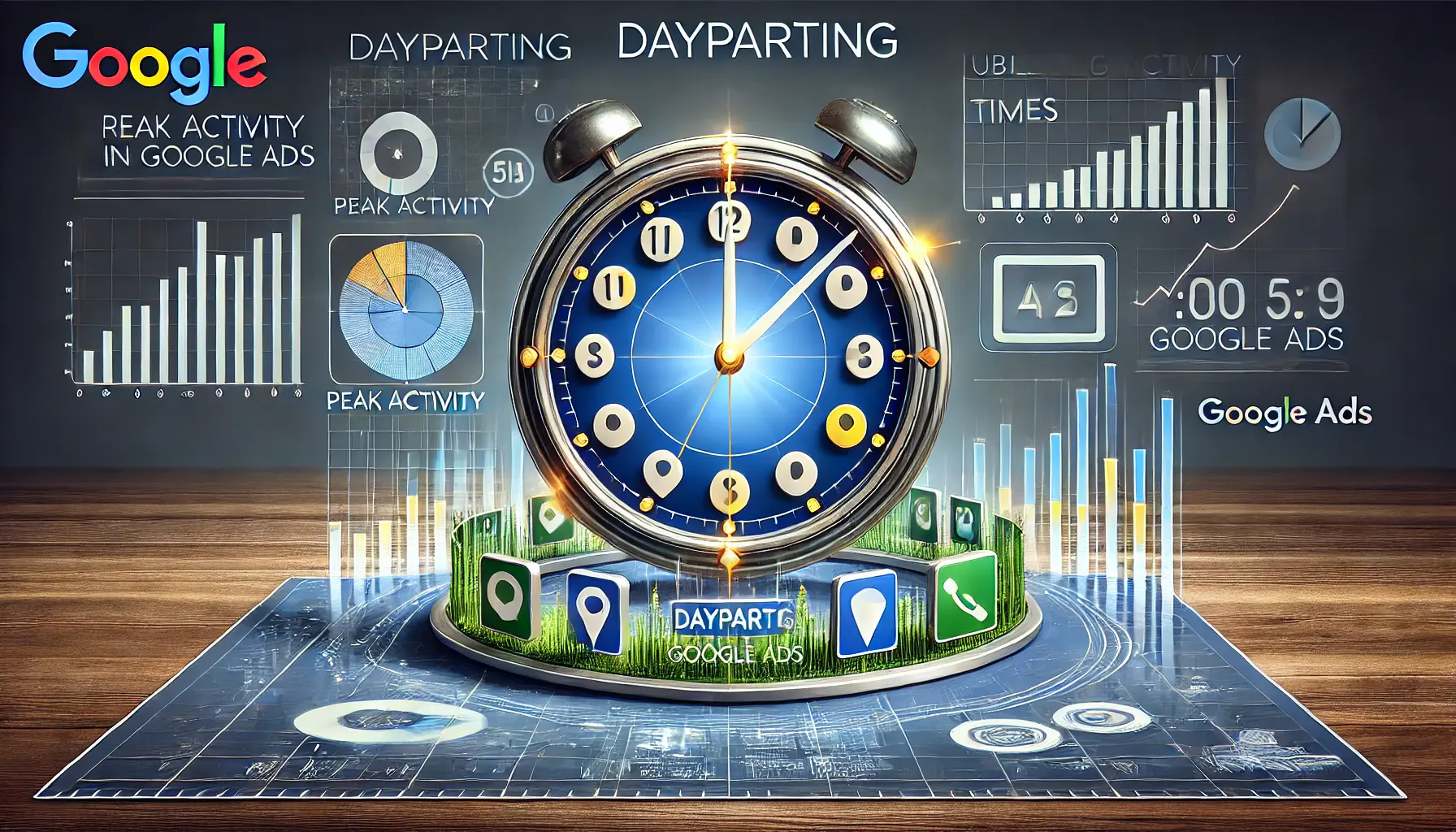
Dayparting in Google Ads ensures ads are shown at the right times for maximum engagement.
Utilizing Dayparting in Google Ads
Dayparting, or ad scheduling, is one of the most powerful ways to ensure that your Google Display Ads show during specific times of the day or days of the week.
By focusing on periods when your audience is most active, you will be able to drive better engagement, reduce wasted ad spend, and ultimately enhance overall campaign performance.
Let’s dive in and go through the steps and best practices for implementing daypartingA scheduling strategy in advertising that allows ads to run during specific times or days. effectively.
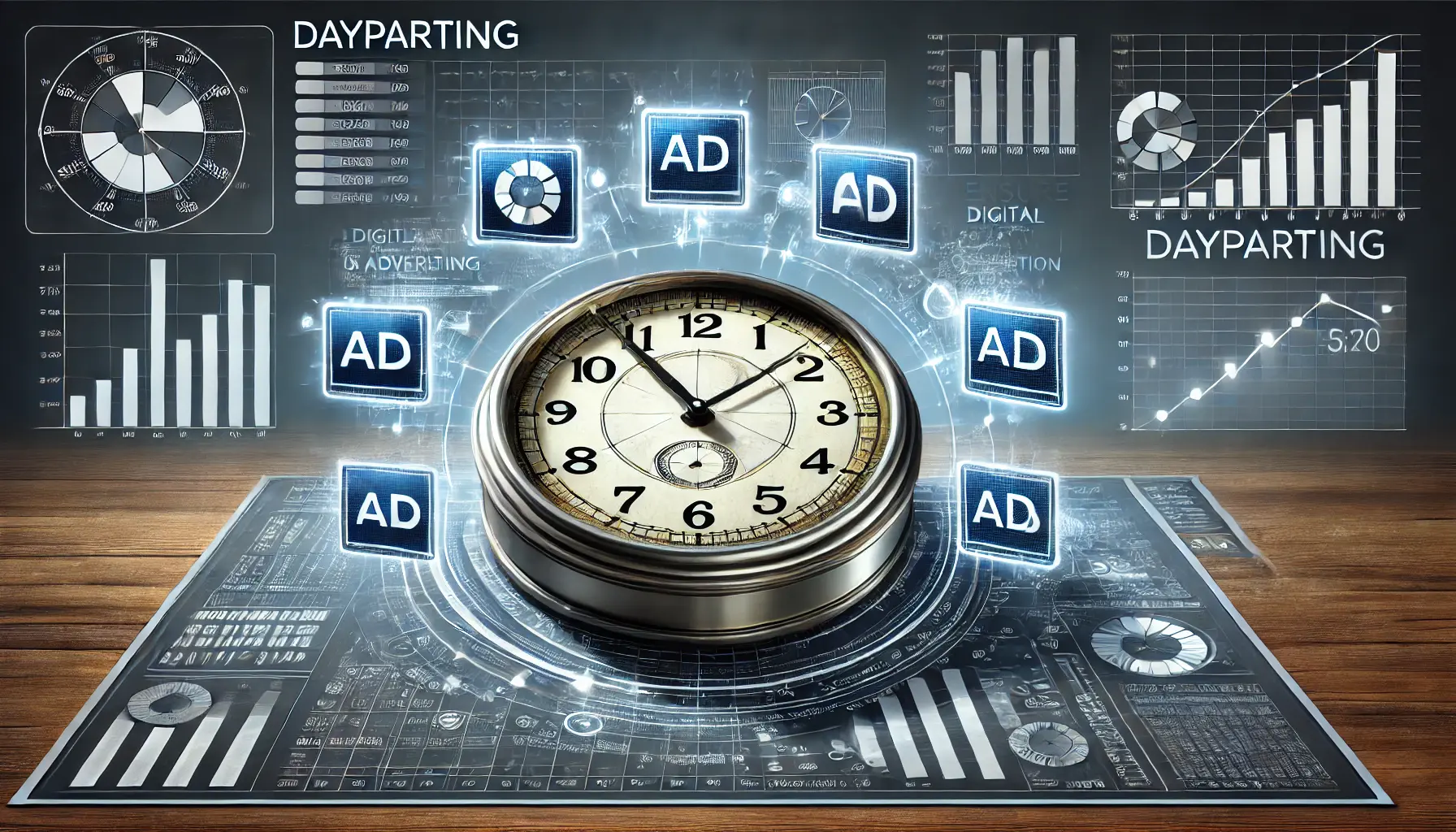
Dayparting optimizes ad delivery by aligning campaigns with the best times of the day for engagement.
What is Dayparting and How Does it Work?
Dayparting enables advertisers to control when their ads appear by scheduling them to run during specific timeframes.
This strategy is particularly effective for businesses targeting niche audiences or operating in industries with predictable engagement patterns.
For example, a restaurant might schedule ads around lunch and dinner hours, while a B2B company could focus on weekdays during business hours.
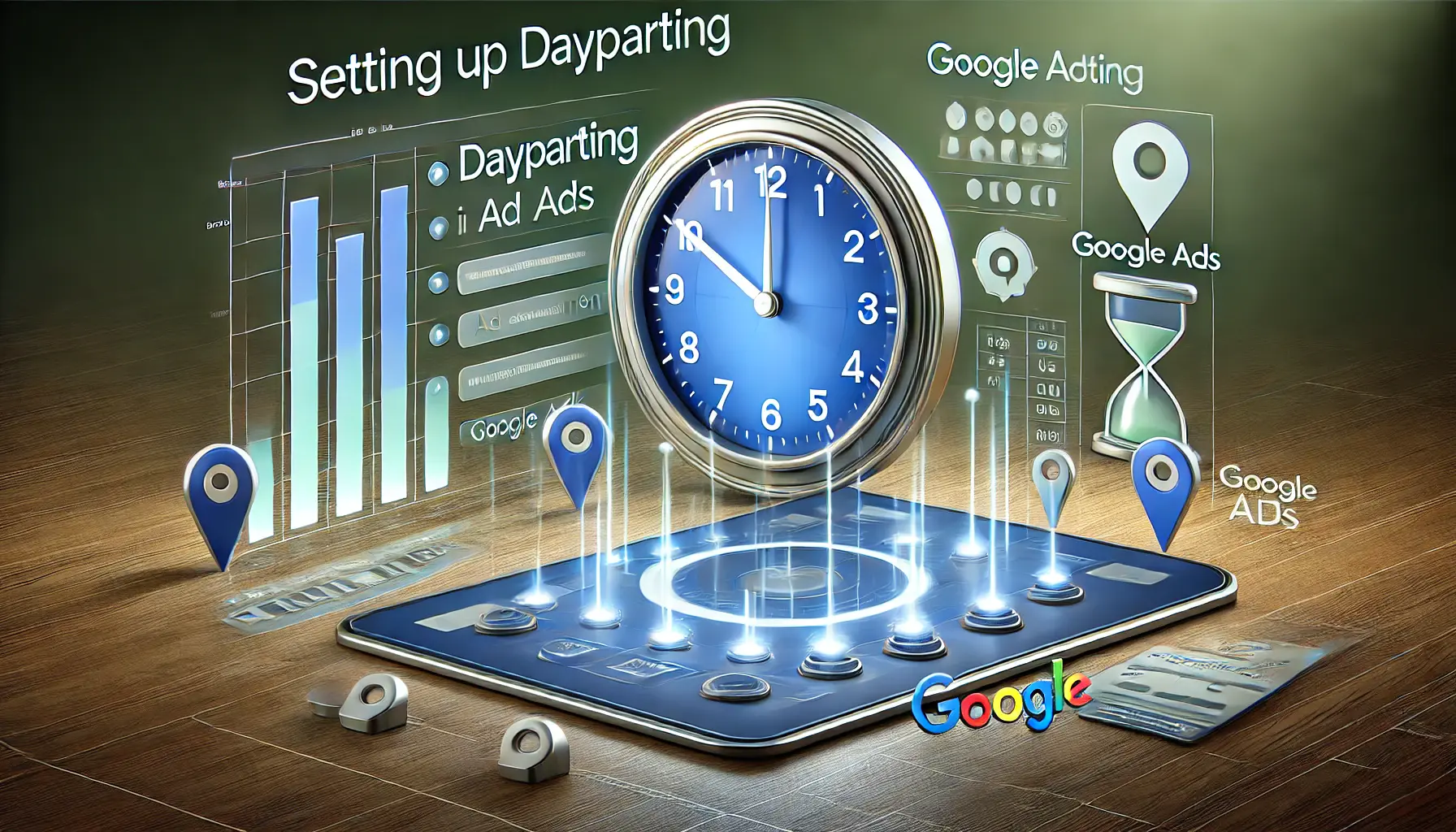
Setting up dayparting in Google Ads allows for precise ad scheduling to optimize engagement.
Setting Up Dayparting in Google Ads
To set up dayparting in Google Ads, follow these steps:
- Log in to your Google Ads account and navigate to the campaign you want to schedule.
- Click on Settings and select Ad Schedule.
- Choose the days and times you want your ads to run. You can customize this for each campaign based on audience behavior.
- Save your changes and monitor the performance of your scheduled ads.
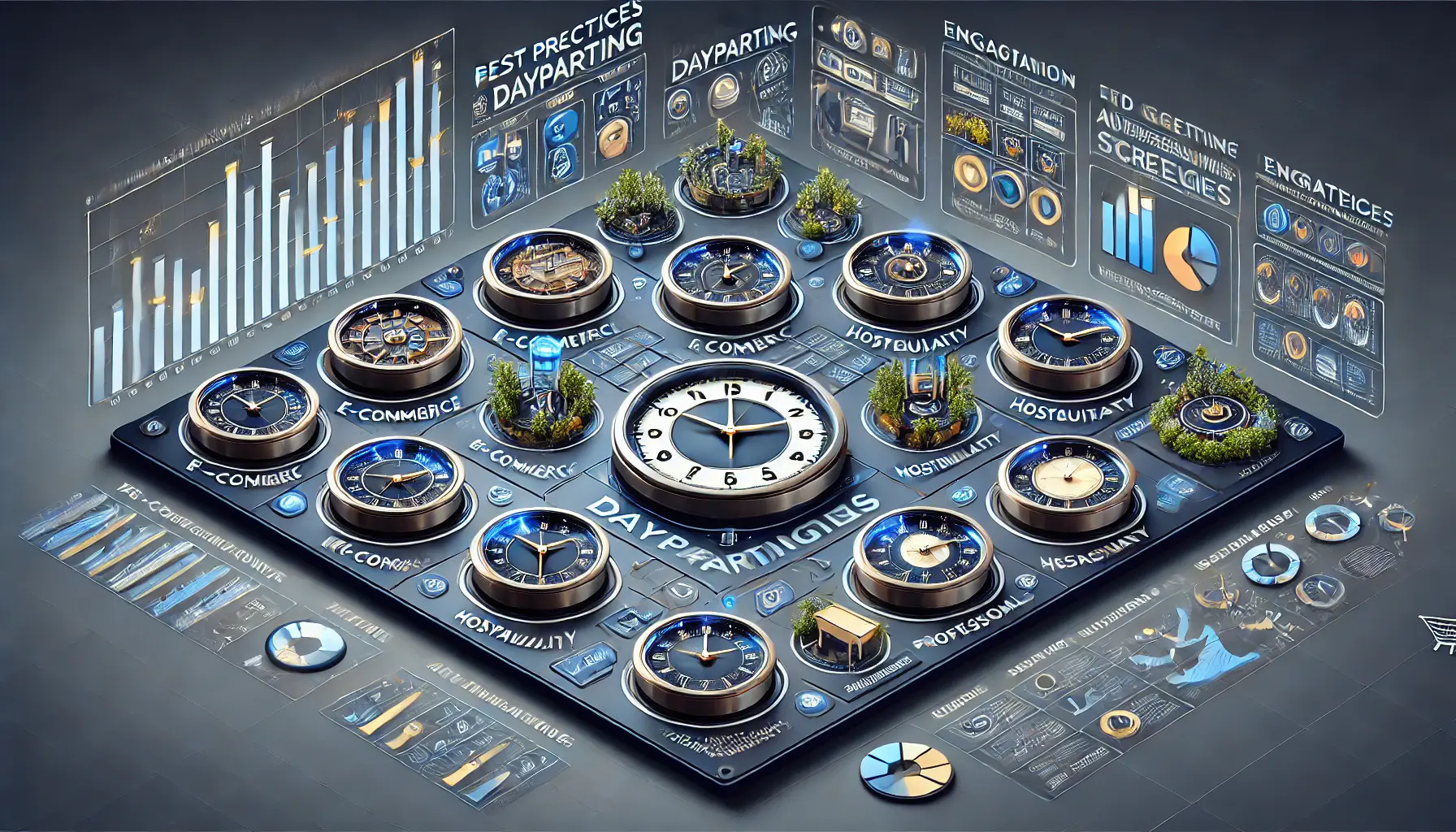
Dayparting strategies vary across industries, optimizing engagement through tailored scheduling.
Best Practices for Dayparting in Different Industries
Dayparting strategies vary by industry, so tailoring your approach is essential:
- E-commerce: Focus on evenings and weekends when consumers are more likely to shop online.
- Hospitality: Target peak meal times or late-night hours for restaurants and bars.
- Professional Services: Schedule ads during weekday business hours to reach decision-makers.
- Event Promotions: Adjust schedules to coincide with pre-event buzz or registration deadlines.
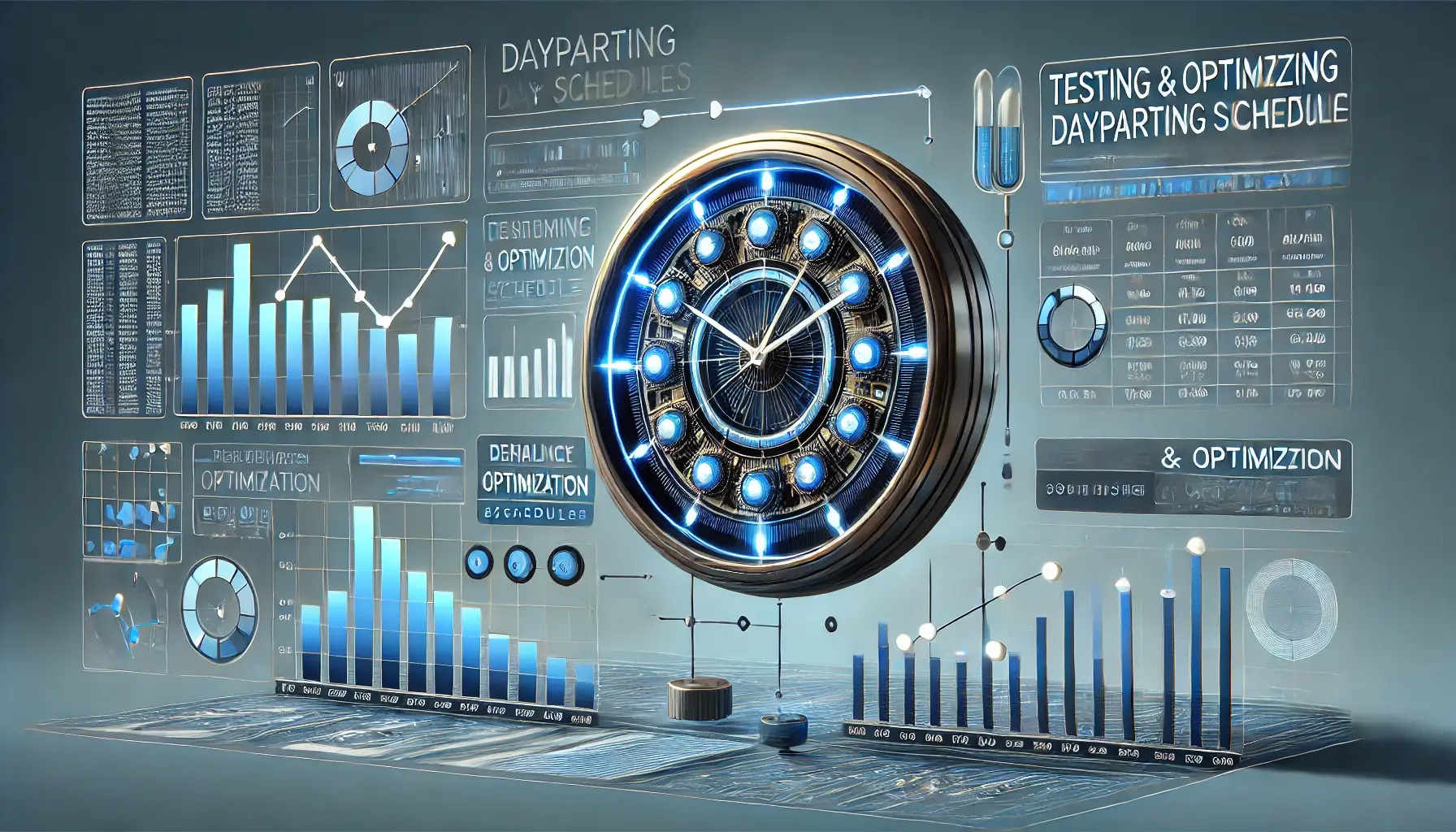
Testing and optimizing dayparting schedules improves ad delivery efficiency and engagement.
Testing and Optimizing Dayparting Schedules
Dayparting is not a set-it-and-forget-it strategy.
Regularly test and optimize your schedules to achieve the best results:
- Analyze Performance: Use Google Ads reports to track how your ads perform during different timeframes.
- Adjust Based on Data: Shift your schedule to align with times that yield higher clicks and conversions.
- Experiment: Test new time slots or combinations to uncover hidden opportunities.
By implementing dayparting strategies, you can take greater control of your ad delivery, reduce costs, and enhance the impact of your Google Display Ads.
In the next section, we’ll explore how to leverage seasonal timing strategies to further refine your campaigns.
Dayparting helps you target your audience when they are most likely to engage, reducing wasted spend and boosting campaign efficiency.
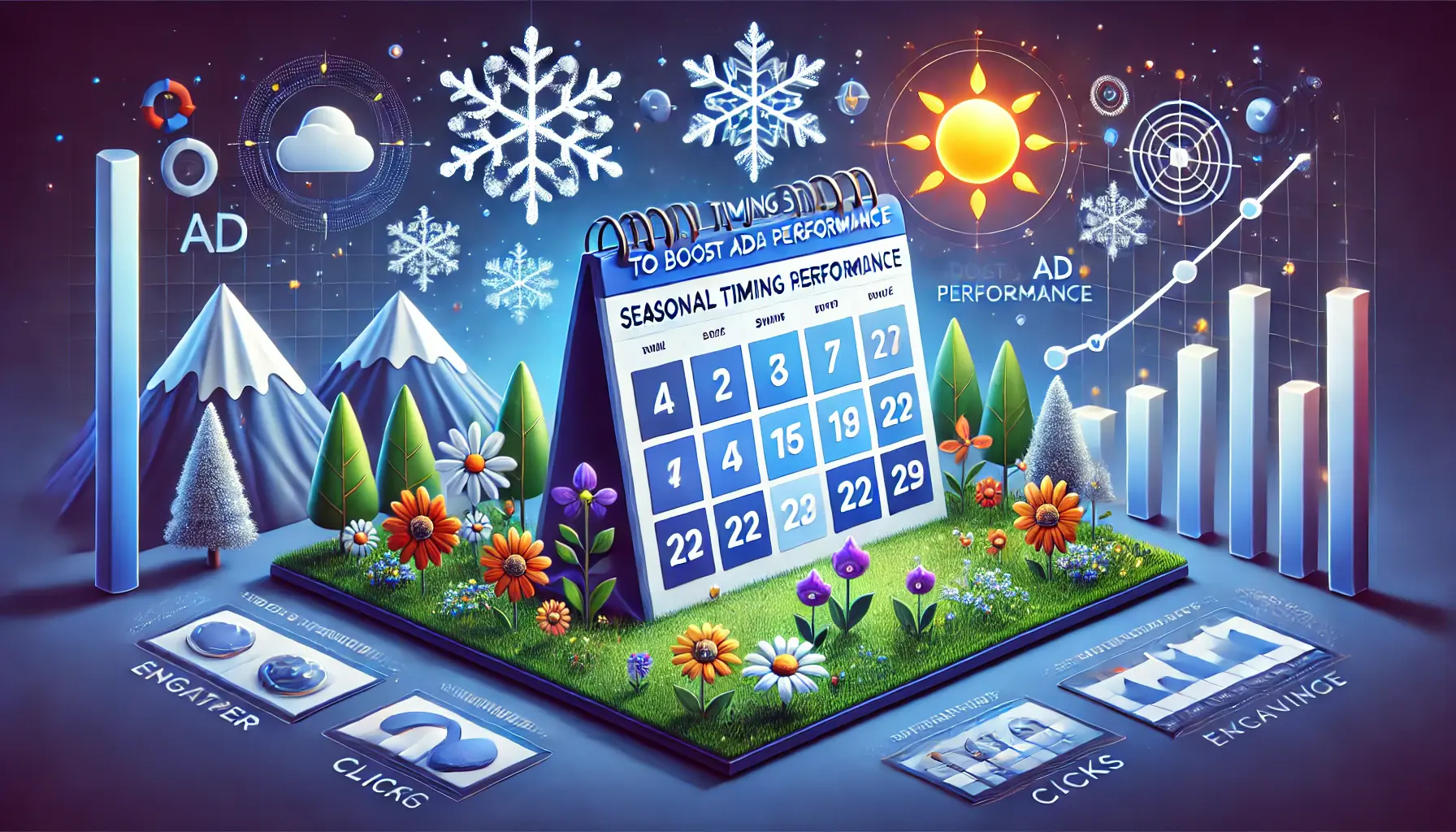
Aligning ads with seasonal trends boosts engagement and ad performance.
Seasonal Timing Strategies to Boost Ad Performance
Seasonality plays a significant role in shaping consumer behavior, and understanding these patterns can help you optimize your Google Display Ads campaigns.
By aligning your ads with seasonal trends and events, you can capture your audience’s attention when they are most likely to engage and convert.
Let’s explore how to implement seasonal timing strategies effectively.
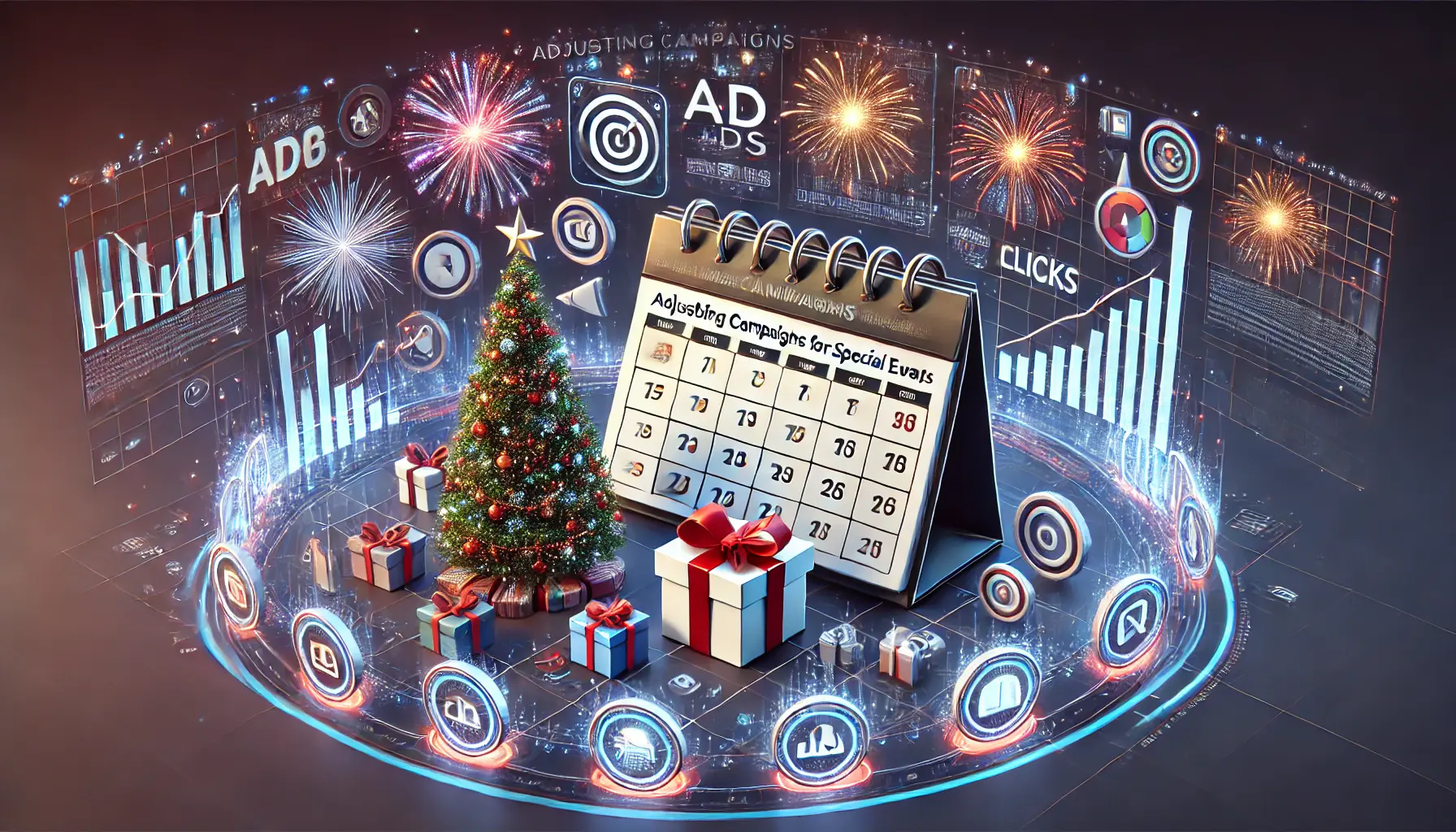
Tailoring campaigns for holidays and events maximizes ad performance during peak periods.
Adjusting Campaigns for Holidays and Special Events
Holidays and special events create a unique opportunity to reach your audience.
Whether it’s Black Friday, Christmas, or back-to-school, making your ads event-specific will greatly help increase relevance and effectiveness.
Your creatives and messaging should match the spirit of the event for resonance with your audience.
- Plan Ahead: The preparation of campaigns should start weeks or months in advance for timely campaign launches.
- Use Holiday-Specific Keywords: Incorporate terms related to the holiday or event to improve ad visibility.
- Create Limited-Time Offers: Encourage urgency by highlighting exclusive deals or discounts.

Capitalizing on seasonal trends boosts engagement and enhances ad performance.
Capitalizing on Seasonal Trends
Seasonal trends extend beyond holidays.
For example, fitness products see a surge in demand during New Year’s resolutions, while travel services peak during summer vacations.
Identifying and aligning with these trends can help you tap into ready-to-buy audiences.
- Analyze Search Trends: Use Google Trends to understand when during the year there is a peak in interest for your products or services.
- Segment Your Audience: Address different groups according to their seasonal interests and purchasing behavior.
- Update Ad Creative: Update visuals and copy to reflect timely trends and consumer expectations.

Time-sensitive ad creatives create urgency and encourage immediate action.
Creating Time-Sensitive Ad Creatives
Time-sensitive ads can drive immediate action by creating a sense of urgency.
Phrases like “Only 24 Hours Left” or “Limited Stock Available” can motivate users to act quickly.
Pair these messages with bold visuals and clear call-to-action buttons for maximum effectiveness.

Analyzing seasonal data helps optimize future campaigns by understanding past performance trends.
Analyzing Seasonal Data for Future Campaigns
Post-campaign analysis is important to refine your seasonal strategies.
Review impressions, click-through rates, and conversions to see what worked and what didn’t.
Use these insights to plan even more effective seasonal campaigns in the future.
Applying seasonal timing can drive campaigns that resonate with your audience and capture high-demand periods.
Now, we’ll look into how to supercharge your ad timing strategies with AI and automation.
Leveraging seasonal trends aligns your ads with consumer behavior, creating timely and relevant campaigns that drive results.

AI and automation optimize ad timing, improving efficiency and engagement.
Using AI and Automation for Better Timing
Artificial intelligence (AI) and automation are revolutionizing the way advertisers optimize their Google Display Ads.
These advanced technologies can analyze vast amounts of data, predict audience behavior, and adjust ad delivery in real time to ensure your campaigns are always running at the right moment.
Let’s explore how AI and automation can enhance your ad timing strategies.

AI and automation optimize ad timing, improving efficiency and engagement.
How AI Predicts Optimal Ad Schedules
AI-powered tools analyze historical performance data, user behavior, and market trends to predict when your audience is most likely to engage with your ads.
Such insights help you schedule your ads at the best times for greater engagement, eliminating guesswork and improving efficiency.
For instance, Smart BiddingAn automated bidding strategy in Google Ads that uses machine learning to optimize bids for conversions. by Google Ads uses machine learning to set bids automatically based on signals like device type, location, and time of day, ensuring that ads are shown at the most opportune moments.

Automated bidding strategies optimize ad performance by adjusting bids in real time.
Tapping into Automated Bidding Strategies
Ad schedules don’t require much manual effort with automated bidding strategies.
Options like Target CPACost Per Acquisition, an automated bidding strategy in Google Ads focused on achieving a specific cost per conversion. (Cost Per Acquisition) and Maximize Conversions automatically adjust ad bidding to align with your campaign goals.
These strategies leverage real-time data to ensure your ads are served when they are most likely to perform well.
- Target ROAS: Focus on achieving a specific return on ad spend by adjusting bids for high-value time slots.
- Enhanced CPC: Increase or decrease bids based on the likelihood of conversion during specific timeframes.
- Maximize Clicks: Automatically bid to drive the highest number of clicks within your budget.

Machine learning tools optimize digital advertising by enabling real-time data analysis and automation.
Integrating Machine Learning Tools
Machine learning tools go beyond simple schedule and bid changes.
These tools continuously analyze campaign performance to provide actionable recommendations for optimization.
For example, Google Ads Insights identifies emerging audience trends and offers new targeting opportunities.
Integrating third-party platforms like Adobe Advertising Cloud or Optmyzr can provide even deeper insights and greater customization options for your campaigns.

Balancing automation with manual adjustments ensures precision and control in ad management.
Balancing Automation with Manual Adjustments
While automation significantly streamlines ad management, human oversight remains essential.
Regularly review automated performance metrics to ensure the strategies align with your overall goals.
Manually adjust schedules or budgets to accommodate special campaigns or unexpected market changes.
Combining automation with human expertise allows you to achieve the perfect balance between efficiency and control, ensuring your Google Display Ads perform to their fullest potential.
By embedding AI and automation into your ad timing strategies, you can take your campaigns to the next level, improving precision and maximizing ROI.
With this all-inclusive approach, you’ll be ready to dominate your advertising goals.
AI-driven tools analyze data in real time, optimizing ad schedules and bids to achieve superior performance and efficiency.
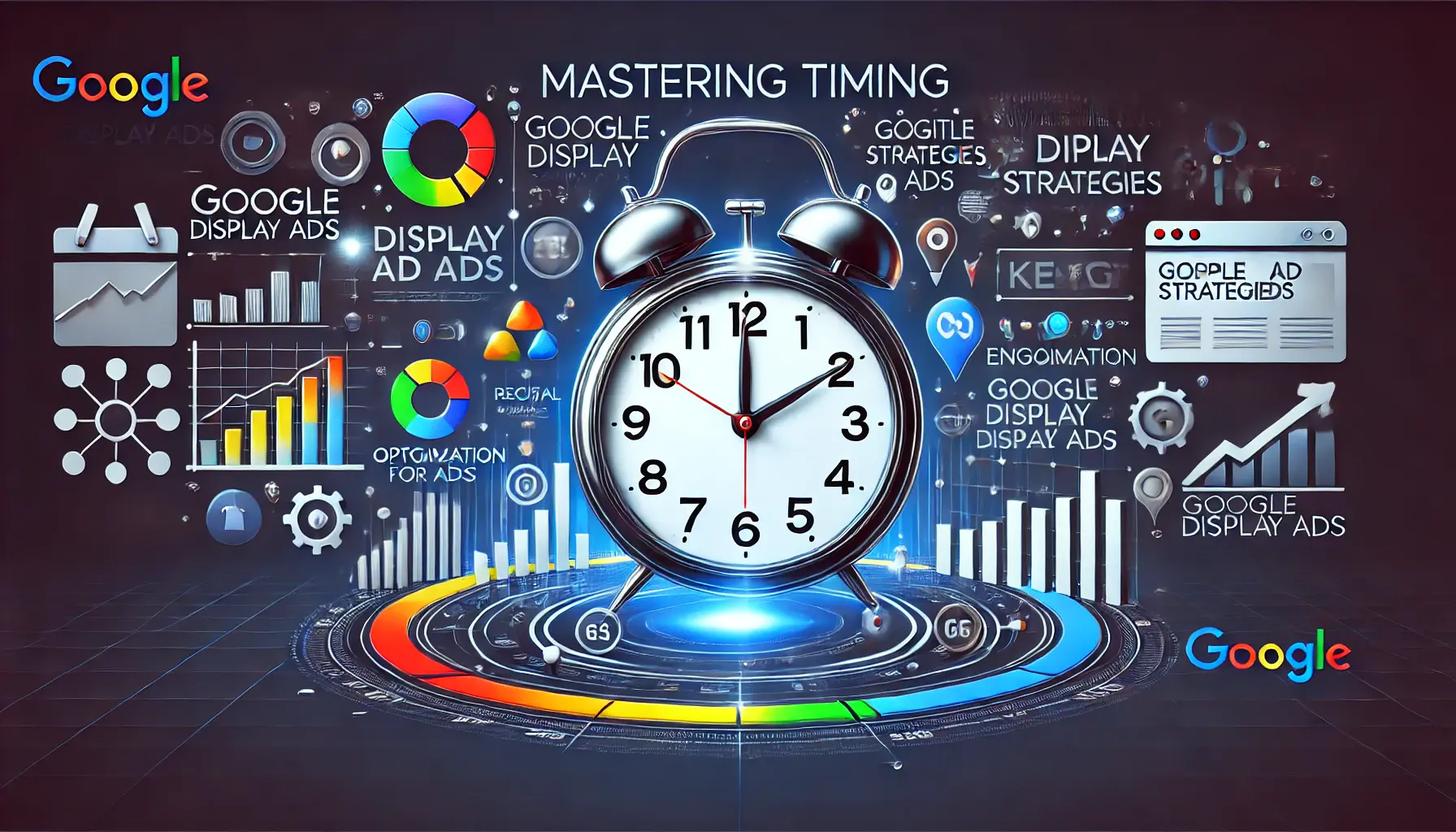
Mastering timing strategies is key to optimizing Google Display Ads for better performance.
Mastering Timing Strategies for Google Display Ads
Timing is the foundation of a successful Google Display Ads campaign.
From understanding audience behavior to leveraging AI and automation, implementing the right timing strategies can elevate your advertising efforts, maximize engagement, and boost your return on investment.
Let’s recap the key takeaways and provide a comprehensive summary to guide your campaign planning.
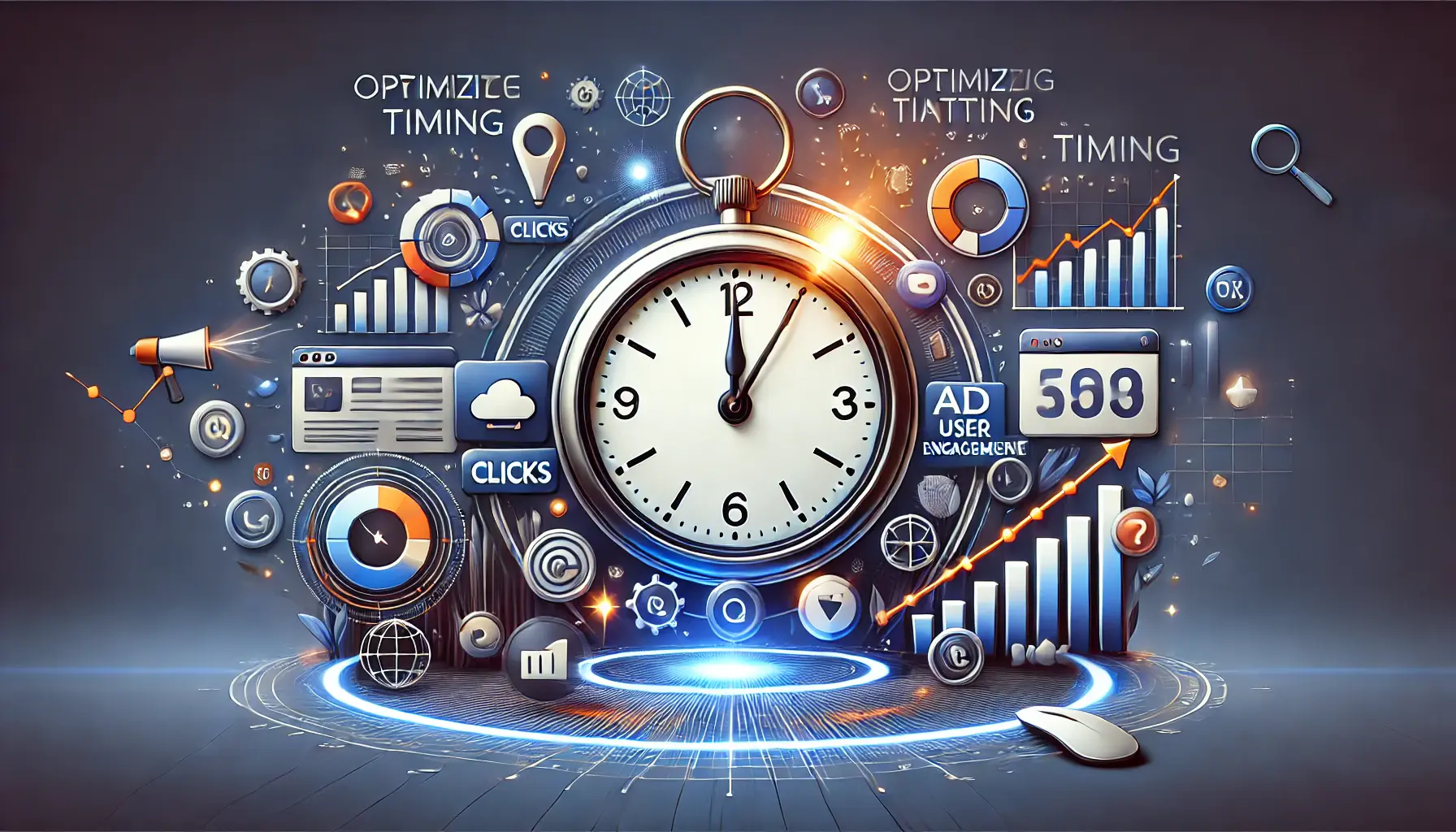
Timing plays a critical role in maximizing the effectiveness of digital ads.
Why Timing Matters
Effective timing ensures that your ads reach the right audience when they are most active.
By analyzing user behavior and tailoring your ad schedules, you can improve click-through rates (CTRClick-Through Rate, a metric that measures the percentage of people who click on an ad after seeing it.) and conversions, making every advertising dollar count.
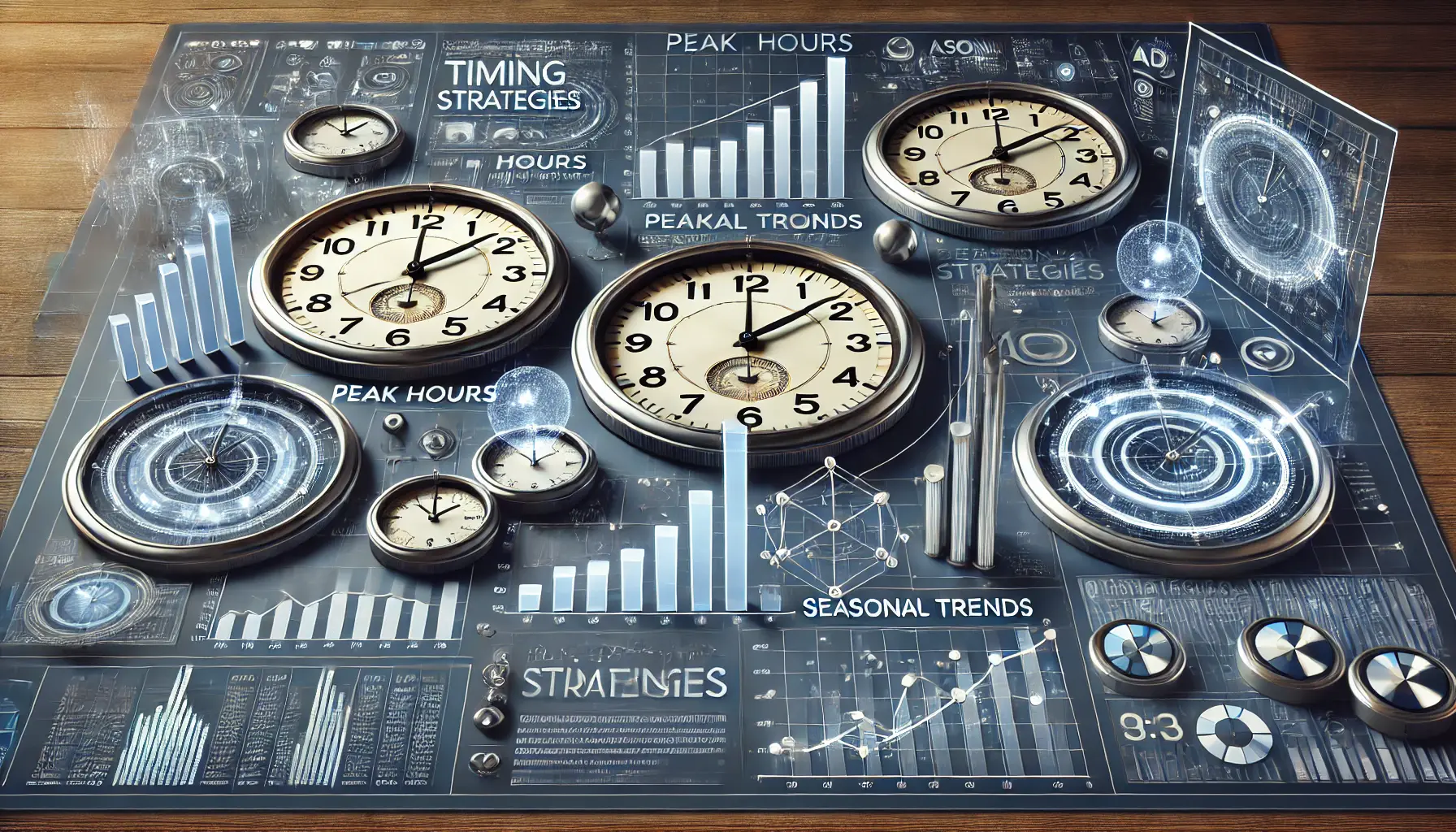
Key timing strategies optimize ad performance by targeting the right moments for engagement.
Key Timing Strategies Discussed
- Analyzing Audience Behavior: Utilize tools like Google Analytics to identify peak engagement times, segment audiences, and refine your ad schedule based on user habits.
- Dayparting in Action: Schedule your ads to run at specific times or on specific days when your audience is more likely to engage. This reduces wasted ad spend and improves performance.
- Seasonal Adjustments: Align your campaigns with holidays, events, and other seasonal trends to capitalize on high-demand periods.
- AI and Automation at Play: Use machine learning and automated bidding to optimize ad delivery and enable precise targeting.

Refining a campaign involves optimizing strategies with data-driven decisions for better performance.
Steps to Refine Your Campaign
Here are actionable steps to make your Google Display Ads timing strategies even more effective:
- Regularly monitor audience behavior and adapt your timing strategies to align with changing trends.
- Test, optimize, and refine your dayparting schedules to identify the perfect time slots for your audience.
- Develop seasonal timing strategies in tune with market trends and consumer demand.
- Leverage AI tools and automation to analyze data and adjust bids in real time, saving time and enhancing results.

Unlocking the potential of Google Display Ads leads to optimized performance and growth.
Unlocking the Potential of Google Display Ads
By integrating these timing strategies into your campaigns, you can make your Google Display Ads more effective and impactful.
Whether you are targeting niche audiences or broader markets, mastering timing ensures your ads reach the right people at the right moments.
Remember, a successful campaign isn’t just about implementation—it’s about continuously evaluating and refining strategies to improve performance.
With thoughtful planning and execution, mastering timing strategies can be your key to dominating the digital advertising space.
Mastering timing is crucial for creating impactful campaigns, blending audience insights, seasonal trends, and automation for peak performance.
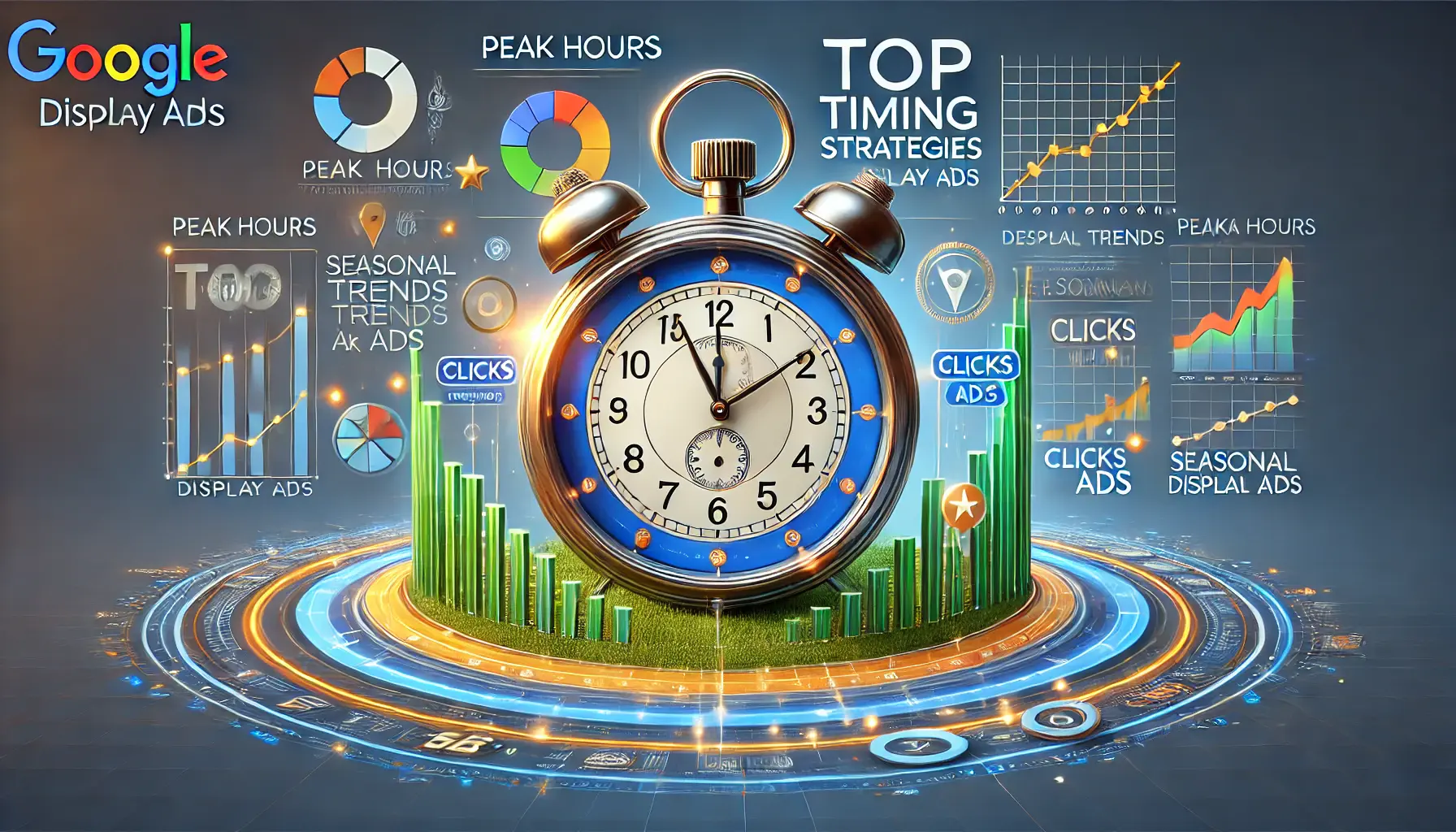
Top timing strategies for Google Display Ads optimize ad performance by targeting the right moments.
Your campaigns can be managed by an agency specialized in Google Ads, check out our service page.
Top Timing Strategies in FAQs for Google Display Ads
Here are a few of the most frequently asked questions about timing strategies for Google Display Ads and their answers.
This section will provide an understanding and in-depth knowledge to optimize ad campaigns effectively.
Timing ensures your ads reach the right audience when they are most active, improving engagement, click-through rates, and conversions while maximizing the return on your advertising investment.
Use tools like Google Analytics to study user behavior, identify peak engagement hours, and tailor ad schedules based on audience activity and preferences.
Dayparting is a scheduling strategy that allows advertisers to display ads during specific times or days when the audience is most likely to engage, enhancing performance and reducing wasted ad spend.
AI analyzes vast data, predicts audience behavior, and optimizes ad delivery in real time.
It uses machine learning for bid adjustments, ensuring ads appear at the most opportune moments.
Yes, aligning your campaigns with holidays, special events, and seasonal trends increases relevance and visibility during high-demand periods, boosting audience engagement and conversions.
Automated bidding strategies, like Target CPA and Maximize Conversions, adjust bids in real time to meet campaign goals, optimizing performance without manual intervention.
Regularly review automated performance metrics to ensure alignment with campaign goals.
Make manual adjustments when necessary to account for special events or unexpected market changes.
